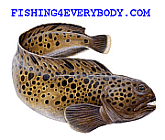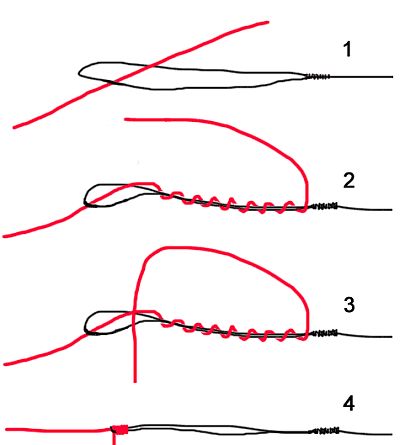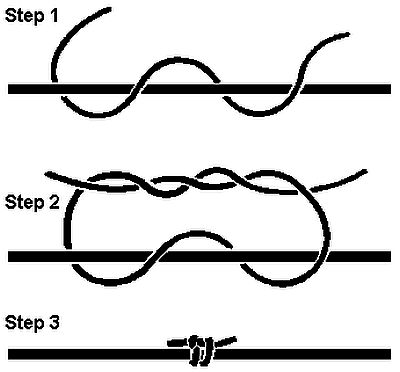
|
 Fishing hooks Fishing hooks
|
 Fishing line Fishing line
|
|
How to tie fishing line to fishing line.
In this article we will discuss how to tie fishing line to fishing line and what is the best knot for different kind of lines.

|
| Step by step guide how to make no-name knot, also known as Bristol knot. This fishing knot allow to utilize almost 100% of breaking strength of the fishing line. |
Joining two different kind on fishing line can be difficult due to significantly different flexibility of these lines. Always, when you plan new knot, you should take into account this fact.
The most popular ways to join two different lines are blood-knot, Albright knot, Uni-Uni knot and so called No-name (or Bristol) knot. Comparison of all these knots on the braided-monofilament pair reveals, the Albright knot shows two time less breaking power in compare with No-name knot. The Un-Uni ans blood-knot shows the better breaking strength in compare with Albright knot, again much lover in compare with the No-name knot, i.e. no-name knot always out-tested the Uni-Uni and Albright one.
That why, if somebody ask, how to tie fishing line to fishing line for different lines, we always advise to use Bristol (or No-name) knot. This will give much more breaking strength for the whole construction with average breaking strength about 95-100% of the weakest line strength – which Is amazing.
How to tie no-name, Bristol knot
| Video, how to make no-name knot, also known as a Bristol knot. |
- Make a strong loop on one of the line. The loop should be really short, not like on the picture. Make for example Bimini twist knot.
- Pass the tag end through the loop and wrap it 5-7 times around the loop double line.
- Bring the tag end back to the start of the knot and pass it through the first turn of this line. (look at the picture – it shown more clearly). It will be convenient, if you hold this construction with your index finger.
- Tight the knot by pulling the lines. Trim off the tag end. During tightening, never forget to moisturise your knot to avoid overheating and make it stronger. It is a good idea to use your saliva for knot moisturising.
As you can see from the above description and from the pictures, it is not very difficult to tie fishing line to fishing line, but to make it perfect it is necessary to have some practice.
see also
 How to tie fishing line together?This is a very important angling knot, which should be known by any fisherman in the world. ...
How to tie fishing line together?This is a very important angling knot, which should be known by any fisherman in the world. ... Fishing tackle shop near meHow to find nearest fishing tackle shop to home and is there are any point to go there? ...
Fishing tackle shop near meHow to find nearest fishing tackle shop to home and is there are any point to go there? ... Fishing hooks UKWhich fishing hooks can be used in UK for coarse and sea fishing. ...
Fishing hooks UKWhich fishing hooks can be used in UK for coarse and sea fishing. ...
F4E about and privacy contacts
© 2014 FISHING4EVERYBODY “Fishing for Everybody”
All materials available on this site are protected by copyright laws and international copyright treaty provisions. (с) fishing4everybody.com